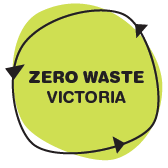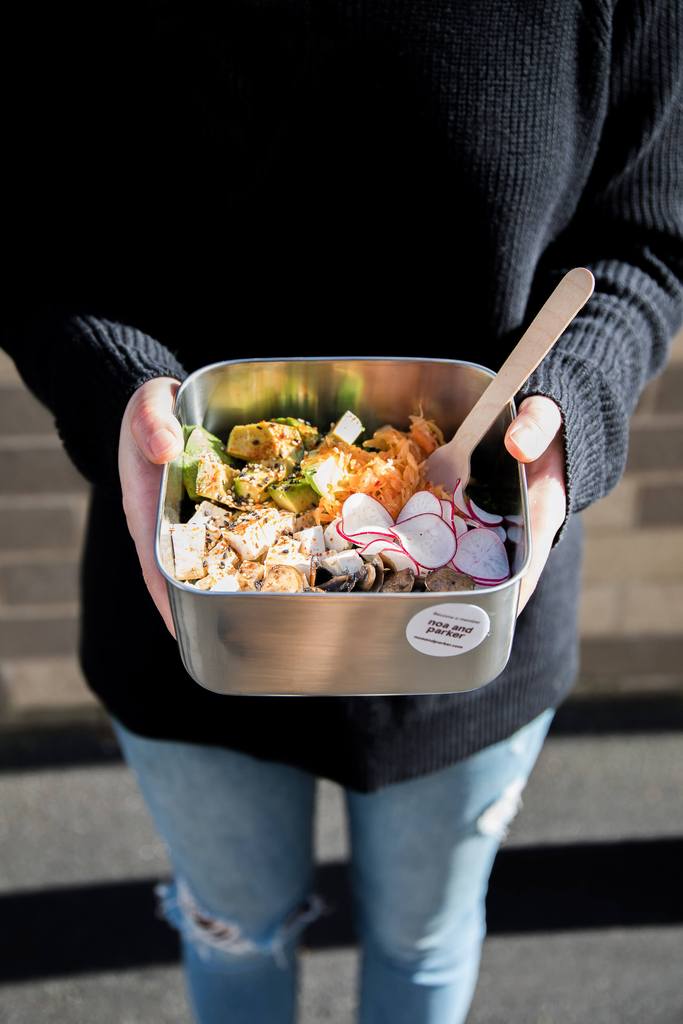Zero Waste Champion: Noa and Parker
When Melbourne was turning to disposables, Noa and Parker was partnering up with cafes to offer a reusable containers takeaway delivery (and pick up) service during Melbourne’s unique time of lockdown. Emily from ZWV shares an in-depth interview with one of the co-founders, Jeremy Kerrigan, to learn more about the Noa and Parker’s start up story, how they pivoted from providing borrowing cups in cafe to their reusable containers takeaway delivery service, and where to next!
In 25 words, or words or less, can you tell us what Noa and Parker is all about?
So Noa and Parker is dedicated to reducing single use waste in the hospitality industry. We started with reusable coffee cups in cafes that our members could borrow and return. And we’ve since expanded into meals and takeaway meals and delivery for our members to help reduce single use waste within takeaway coffee and takeaway meals.
How did the Noa and Parker story begin?
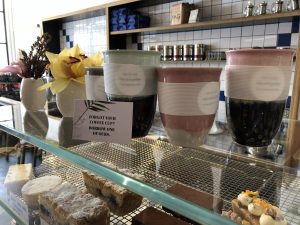
So my business partner and I met through mutual friends. The idea was around the time of ABC’s War on Waste and everyone was triggered by this single use waste with the coffee cups. We looked at some options around how we thought we could access and make a bit of a dent into that system and with a physical product and a bit of a mix of digital products, that would help, yet add a new a new option for cafes and consumers.
We did a bit of research in the area. So we went out and I spoke to lots of cafe owners spoke to lots of customers, people with Keep Cups, people without Keep Cups in the cafe. And just understanding people’s behaviour around the borrowing event and around getting coffee and getting takeaway coffee.
And what we found was that there was a real ‘want’ to use these things. And a lot of people do have their own cups, but they just simply forgot them.
And now if I had $1 for every time someone told me “I’ve got a cup, but I’ve just forgot it today”, I’d have a lot of dollars, because that was pretty much a lot of conversations with people getting a single use waste one.
So from there, we set out to build the system where the cups are clean and waiting for you at a cafe, then you can never forget them. And then even if you do forget your own, you can borrow one of ours. And that pretty much born the Noa and Parker brand.
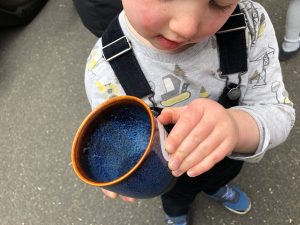
Noa is my business partner’s daughter, and Parker is my son. So that’s where the name comes from, so I say do it, do it for the kids and the kids’ future, which is kind of a bit of a driver for us.
We had a number of cafes on in Melbourne and other cafes in Sydney, where Jonathan’s from, and then COVID arrives, and everyone stops using reusable cups, and the BYO cup movement kind of grinds to a halt in a lot of ways.
Some of our cafes still accepted them, here and there. But overall, it was okay, we’re just going to put it on pause. So we decided to pause our business there with the reusable cups. And it was the driving force essentially to say, okay, now it’s time to accelerate a few of these other ideas that we had.
We were always going to do take away through containers. But we’re kind of were working through the cups first, and then, we just said it’s time to accelerate that and bring the containers out. We weren’t as viable to do the borrowing as such. So he said, we’re just going to start delivering. That’s when I jumped in my car and chatted to a few of our cafe partners, got out containers and just said, we do delivery now. And members started ordering meals instead of borrowing cups. And that was how we started with the meal service.
How long were you providing borrowing cups before your takeaway container service?
It was probably up and running for about maybe four or five months. So it was still pretty early days. We were growing pretty steadily with new cafes and new customers. But then, obviously COVID changed that for hospitality in a big way. But then through the meal deliveries, through shooting meals on Instagram and being able to bring in people through Instagram for this delivery service, we’ve been able to continue to grow and continue offering that single-use free model. And it’s food now, instead of coffees. Happy to say that things are starting to show some good signs around reusable cups again. So we’ll be able to look at restarting that service again, as well.
The number one question on everyone’s minds right now – How do you ensure everything is COVID safe?
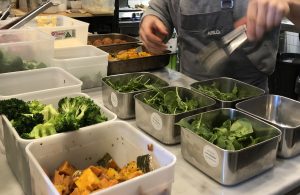
Absolutely. So we’re really big on this, we wanted to make them really comfortable. And so the first thing was, what we had really existing relationships with really great partners. And that gave us essentially a leg up to say, they’re there, they’re keen to have to do their bit for the environment and they want to be supportive. So that was my first point of call.
The way we approached it was – how can we make this as safe as possible for everyone involved? So the first thing is about how we drop off our containers, and essentially, put those straight through the wash. So they lay out a tray for us, and what have you, we drop the containers into the tray. And then they put that straight into the dishwasher and wash it straight away, so on there, and they know that they’re taking those containers out, sterilized, clean and ready to go.
Then the only people that are touching it, while preparing meals is the cafe staff. So as you would get your takeaway food, and they’re going to be touching the containers, and it’s the same people touching our containers. Then, when we drop off the meals, we do the contactless drop off.
We make sure that the team are just dropping off the bag, the bags being packed by the cafe staff as well. And then our members dropping those back in the bags, again, to be returned, and essentially dropped back into the dishwasher service and wash and repeat.
So yeah, we’re really about making as many removing as many touch points along the way as possible. And to make sure that the only people that are really touching the containers, either the customers themselves or the cafe staff, and that they’re getting washed rigorously throughout the system.
That’s great – thinking through every single point.
Well, it’s a great question, because it was a real concern. I love the environment, but also fear death. And there’s not many other drivers stronger than fear of death. So those early days when COVID first hit, and we didn’t know what was really happening. There was a lot of concern in the air. But as the data sort of came in, with reusables, there’s almost no chance – which you’ve probably seen in the Greenpeace article – almost no chance that you’re going to catch it. So yeah, we’ve been very confident throughout with our system.
How did you find your conversations with the cafes? With the cafes that you had already been working with. And the new cafés – how did you kind of approach the conversation with encouraging cafes to jump on board with you?
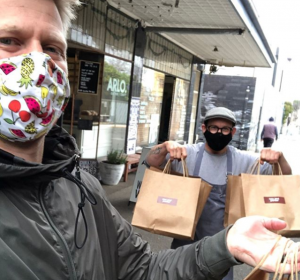
I do a lot of the essentially the conversation sales work myself and coming from the cofounder, it’s always stronger, I believe, going to a new café. With existing cafes, we’ve probably got maybe 60% of them on board. There was still a percentage that were closing their kitchens and perhaps weren’t didn’t viably make sense for them to keep kitchens open and do these meals. So it didn’t work for those guys, which is fair enough. And then from there, that gave me the base to chat with new cafes. And there’s an interesting thing where you say: What we bring to the cafe is we say, look, we’re going to buy these meals from you guaranteed on these days, and we’re going to deliver them all for you to our membership. And all you guys have to do is supply us the meals and make them in our container. So using that as the base was great because we’re going to buy meals from them and they’re looking to make money as well.
They’re running a business and it’s a hard time during COVID. So we were able to get support that way. And then once you have obviously gone through the process around how we clean and maintain the containers, then more people came on board and it would run from there. It’s built confidence with cafes seeing other people doing it. And we’ve been able to grow that way.
How has your experience been with navigating the documentation and regulations around food safety and handling with the model that you’ve got at the moment?
Yeah, for sure. So we spent a bit of time, especially early on getting feedback around what was involved and how we would also make sure that we were safe and that they were safe. And essentially, what the feedback that we got was that making sure that we were cleaning and washing and maintaining the containers through industrial dishwashers would make sure that we would be clean and safe in that regard. And then that the cafes, were preparing the meals and taking care of all the meals and that that’s coming out of a food grade safe kitchen. So that gave us the confidence to go out and to offer the service.
How did you get the word out there about your business? You’ve mentioned Instagram and that’s been a big driver for you.
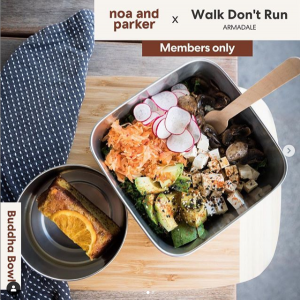
Yeah, Instagram’s really strong for us. There’s so many people on social media, from my mum commenting on every picture saying that it’s great and everyone should really get involved to highly targeted areas through our cafe partners.
Where someone like Hoba in Pahran would have 30,000 followers on Instagram and so it would cost us a lot of money to get out and reach 30,000 people if we had to pay for that. But we can buy a few meals and get them to post a few images in our containers and we’re able to reach that audience much faster, and being very targeted to a specific audience who’s interested in that area.
We’ve really leaned on that to help us build out. The meals look incredible in our containers so we’ve had a real focus on shooting beautiful shots because it makes a huge difference. You can go back through my Instagram feed and see Jeremy’s iPhone shots early on in the days, and they were mostly just pictures of my son holding a cup, but now we’ve got a real focus around it. Yeah, he’s the star of the show here – they’re the owners really!
What have been some major challenges you’ve faced so far? Obviously COVID has been a big one.
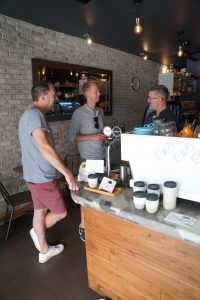
For sure, the concepts is so new, and like anything new, you have to first be able to explain it to people in a way that they can quickly understand it. And then second thing is to show to show the value. So the hardest thing early on was for us to really convey what it is we’re doing.
I was just asked so many times, can I just buy the cup? Okay, can I just buy it? Like, why can’t I just buy the cup? And our whole thing around this is that there’s already 1000 cups out there if you want to buy cups, so we’re not adding anything new to the market if that was the route we took. So we were really about the borrower, and that the problem that we’re solving is that I’ve forgotten it and that at that moment, I need something. So the biggest challenge probably there was that both cafes and customers alike, to get them to understand that and get on board. And probably the second hardest thing to do was to source the appropriate caps and containers.
Now, when you’re talking about buying in bulk, or buying large quantities of containers and things along those lines, there’s certainly not many options in Australia to source these things. So when we first started, there’s a number of different cups and different containers and things. And so we’re still sort of working through what’s the right material, what’s the right quantity and size for the system.
I think that’s probably been the most interesting challenges along the way – getting people to understand and then finding the right the right materials that fit.
How did you decide on those containers? What considerations were there?
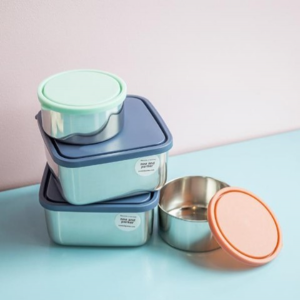
So when we first looked at what the containers and cups that we wanted, we were just really sold on ceramic. We love ceramic. We love the feel of it. We love the feel of coffee on a cold morning and getting that warm ceramic in your hands. We said that’s when we worked with a lot of different Australian ceramicists. So originally, it was the Pottery for the Planet crew we started with. They did some beautiful ceramic cups for us and we just bought them wholesale from them. Then we moved into working with some local ceramicist to actually make the cups for Noa and Parker – these are incredible cups with a very high price point as well. So when we first started with that, we really loved that moment and holding those cups and I really loved drinking coffee out of those.
Then when we looked at how it would make sense to do delivery, and thinking about containers in bags, multiple containers in bags, and ceramic just started probably not making sense. As much as we love it. So we thought what’s something that we can get wholesale in Australia, we can also be proud of and it looks great. And that’s what we found the found the containers online, and we found those through just an eco-wholesaler. We bought those off the shelf and put the Noa and Parker stickers on them and ran from there.
Thinking about your whole business, what are some other points that you would highlight that relate to zero waste?
Yeah, for sure. There’s a couple of pieces to it. One thing is thinking about end of life for a container. And, and one of the issues around ceramic is that there’s not really options for end of life for a product. So it serves its beautiful purpose throughout its life and then at some point it is returned sort of back to the earth, we felt it was a natural product.
That’s where I think stainless steel becomes really interesting because it can actually be recycled, and it can be returned back to be made into a new material. So for us through the lifecycle of the product, now having a container that can actually once it’s served 1000 meals, it can then be returned back into the system to be, you know, reused as a valuable material. Another piece that we’re actually looking at is around becoming a B-Corp certified.
So we’ve started that journey, to see where we can get to and to think that it makes sense. But we believe that it aligns nicely with our business and ethos. And so we hope to have that up and running sometime soon.
But I guess in and around the business itself, we kind of don’t have a lot – if that makes sense. So we don’t have any office space, we don’t really have any real estate or paperwork or anything that we really have to worry about from that sense. All we kind of really have is we have some people as delivery drivers, we have some admin people, and we have containers and a website. So from my point of view, there’s a lot there that we’re kind of avoiding in some sense that may be considered wasteful, but we certainly hope to do more in around that space. I guess it’s along the way how we can utilize that. I’d love to buy some Tesla delivery car or something…
And off-setting carbon emissions and planting trees for now?
Exactly. For us where we’re really focused on is what is it we can do and we can do really well? We can have a certain amount of impact as an individual but then as a business, we can certainly magnify that impact across many hundreds, if not thousands, if not millions of people, if the business becomes big enough and put a real dent in a lot of the single use ways.
What are some great wins you’ve had? And what’s your impact so far?
We were just actually running some numbers the other day around how many meals we’ve already delivered and we’ve already hit more than 400 meals, which is great. And then we’ll sort of running the numbers based on what would that equate to roughly, if it was takeaway meals, and so you’d say there’s probably a bag that’s being used, there’s a container of some description, there’s possibly cutlery and possibly napkins. And then if you times all that out, with little containers for sauces and things along those lines, then you’re almost saying its five plus times that amount. So you’re probably saying there’s maybe around the 2000 mark of single use items that have just been saved from landfill. Just through the system alone, just through delivery.
We were also looking at some of our biggest users who are our power users and some of them have saved more than 300 items themselves. I think our best members saved something roughly around the 315 mark of single use items just by getting their lunches delivered through Noa and Parker each week. So that was some great numbers. And that’s really just been through the last four months or so with the takeaway, and we’re getting to a point where we’re averaging, anywhere from 30 to 40 meals per week now, in and around our membership base. It’s just sort of growing, growing exponentially across that as well.
Awesome! And fine dining now too – how’s that going?
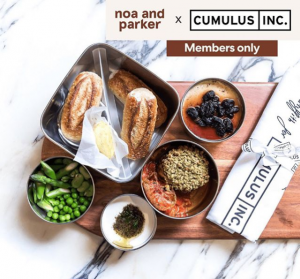
Yeah, that was pretty incredible! I had to pinch myself a little bit when that happened, considering where we started with just some local cafes that we built good relationships with. And I guess we really proved to ourselves and to everyone else, that this doesn’t just have to be a casual lunch from a café. This system works, at all spectrums of the hospitality industry we believe so we’re working to keep offering this service with whether that be dinners or whether it be a more high end fine dining offering and to really find that if there’s a demand for it from our membership base, then we have something really strong to go to these higher end or premium restaurants. So yeah, it was very exciting to do that delivery, and somewhat nerve wracking.
So where to next for Noa and Parker?
Look, we’ve done the standard offering around the lunches on Thursday and Fridays. A driver of this was people being locked in their houses and not really being able to go anywhere and work from home and what have you. What we’re seeing a little bit now is that there’s a bit of a move away from that, with some people going back to work, kids going back to school, and things changing a little bit. We still see there’s a demand for, for lunches, but we’re starting to get some more feedback on or perhaps some dinners would make more sense.
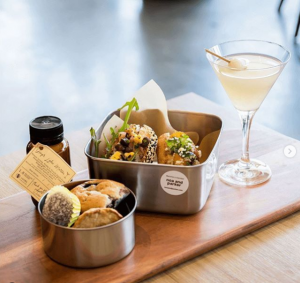
Another thing that we’re starting to look at offering is alcohol delivery. But how do we do alcohol delivery, the Noa and Parker away. So there’s we’ve found a unique partner to work with who do cocktails in the like in reusable containers and reusable little jars and things. We’re able to deliver these cocktails and make them available to members to have on a special occasion, and then we’ll pick those up to take them back to our partner, and wash them and reuse them again. It’s very easy to do a bottle of wine but essentially, that’s probably just more single use waste if we really broke it down, whether it’s recycled or not. So how can we do this the Noa and Parker way? I think that that’s an exciting sort of evolution for us to see how we can offer that as a service to our members as well.
BONUS: We have some questions from our Zero Waste Victoria proud and paid up members:
What helpful guidance do you think that cafes and restaurants required to integrate like a similar sort of system?
I think there’s a funny thing, which is, we don’t make containers and containers aren’t anything new, like they’ve always been around. I think there’s it’s usually a lot of people putting in the too hard basket. We also see that there’s a lot of people doing a cup library or something along those lines, where they’re doing the right thing, and they’re helping their members and they’re buying cups from the shop to make available. But the cups never come back. So there’s this trouble with accountability and tracking. It’s certainly not easy. And we try and make it as easy as possible by supplying containers supplying everything and making it very, very easy for them to onboard.
I’d suggest that they contact Noa and Parker is probably the first to do that. I think that the libraries are a good, a really good place to start cup libraries and container libraries. And just making it available normalizing it, if you will. I think there’s going to be more people in this space. It’s not going to just be us there’s going to be too much opportunity here. There’s literally billions of single use items that need to be disrupted. We, we can’t do it all alone.
So I think there’s going to be more businesses and more startups in this space. I think probably the cup library and the container libraries is a pretty good place to start even just dropping them off yourself.
As we kind of moved back in and restaurants are starting to open in cafes and things that’s really exciting. Some members were wondering do you need help with researching or spaces or funding etc.?
We really want to focus on this, it’s not a hobby. It’s a real thing. It’s a real business. And we think that there’s a lot of people who have this side hobby or you have this thing that they believe in, but they’re believing it’s a hobby. I believe that it’s time to commit. Actually there’s a growing trend now where around the world we see the kids are out there protesting, we see that people want to see change. We’re seeing this sort of convergence between the environment and the business world and as we spoke about with the green washing (before the interview) and what have you, it all pushes down that avenue that that consumers and customers want one this. And that whether existing companies try to keep it as the status quo, and they use the greenwashing as a way to avoid change, but I think the change is inevitable. So for us, when we say, and we look at that, we’re going to say, Okay, how do we grow this business? To have a real impact? Ok then, if it’s a real startup, then what would a startup do? And so what would a startup would look and say – we need to get funding, and we need to be able to grow this business so that it can have that real impact.
And so for us, Jonathan and I have just self-funded it up until now, and where we’ve grown this far paying marketing people and buying containers and development. And so to really go to that next level, we’d have to look to outside funding, and to help us help us really build that.
So we’ll be looking to do some sort of fundraising in maybe six months, or something along those lines, when we’ve got the system, the environment’s changed, where we know people are back in cafes and restaurants again, and we know what balance it is between borrowing in the cafe versus meal delivery. Then to say, okay, this is the kind of backing we would need to really grow it.
Then the second thing is that we need good people. So I’m always very open to hear from good people who are passionate about the space and have great skill sets who believe that they can really help us grow. So yeah, that’s probably the two things we’d be we’d be looking to. We’re open to chat to anyone about that. We’re at noaandparker.com and Instagram (@noanadparker), that’s the easer way to find us. The breadth of what we offer is really on Instagram and that’s where people should probably go to really deep dive into the meals we have on offer and some of the experiences we’ve already offered. And then when you’re ready to try it, become a member and we’ll be delivering meals or be available to borrow in cafes very soon.
One last member question: Will this provide a savings to your business in the long run? So I’m not sure it’s kind of thinking about cafes or your business?
I think the way we think about this is there’s this interesting thing around value, and what’s the value in a product. And I believe that there’s probably a great way to graph it, but a single use item, it has really strong value for about two minutes. And then you finish your meal, you finish your drink, and you sort of look down into your hand, you say, why am I holding trash? And you know, how do I quickly get rid of this as fast as possible, because I don’t want to be walk around hauling trash. And so there’s this thing around the value of that item that it’s really strong for two minutes. And then the rest of its lifespan is just literally trash.
So when we talk about containers, they’re the expensive part of our systems. We have to buy a lot of these containers, and then use them again and again, but when we talk about the value of that container, every single use of that container, whether it be a cup or food container, it just grows in value over time, because it reduces something else from landfill. But it’s also added new value to someone else’s life where it’s delivered this great meal, or great coffee or whatever it may be. And it’s added that value. So it sort of grows again and again and again on itself every single time it’s used so that that’s the way we think about it. And then that’s the way we sort of talk to okay that we pay a lot for the containers upfront, but over time, they add so much value and they essentially pay themselves off both financially and also through the value that they bring to people’s lives and the system.
Finally, what’s been a really powerful moment that has ignited your own personal Zero Waste life journey?
This business has ruined me for Friday night takeaway, right? There’s very little options now where I can go just get some takeaway dinner or take away lunches, because every time I ever want to get some pho or something along those lines, there’s 30 different containers that show up at the house. So yeah, that makes it tough for my wife, and I had to choose some dinner. So it’s this thing of you can’t un-see it.
It’s like that moment where you just you realize you just can’t un-see the waste anymore.
Another is that I don’t have business cards anymore. Because it was just like, why was I carrying business cards around when I can just email someone or little things along those lines. So I think that’s really been the kind of aha moment for me. And you just you see it everywhere you go. And so there’s lots of problems in the world, lots of things that can be solved. But we’ll focus on this one to start with and, and see where we get to. But yeah, I think that’s probably been the big one for me to say that. Yeah, it’s everywhere. It needs lots of people to change, lots of mindsets and lots of really business forward thinking people who want to do good for the earth, and let’s do it for the kids.
You can find Noa and Parker on their website noanadparker.com or Instagram to learn more and ‘borrow for tomorrow’.
All images were supplied by Noa and Parker.
